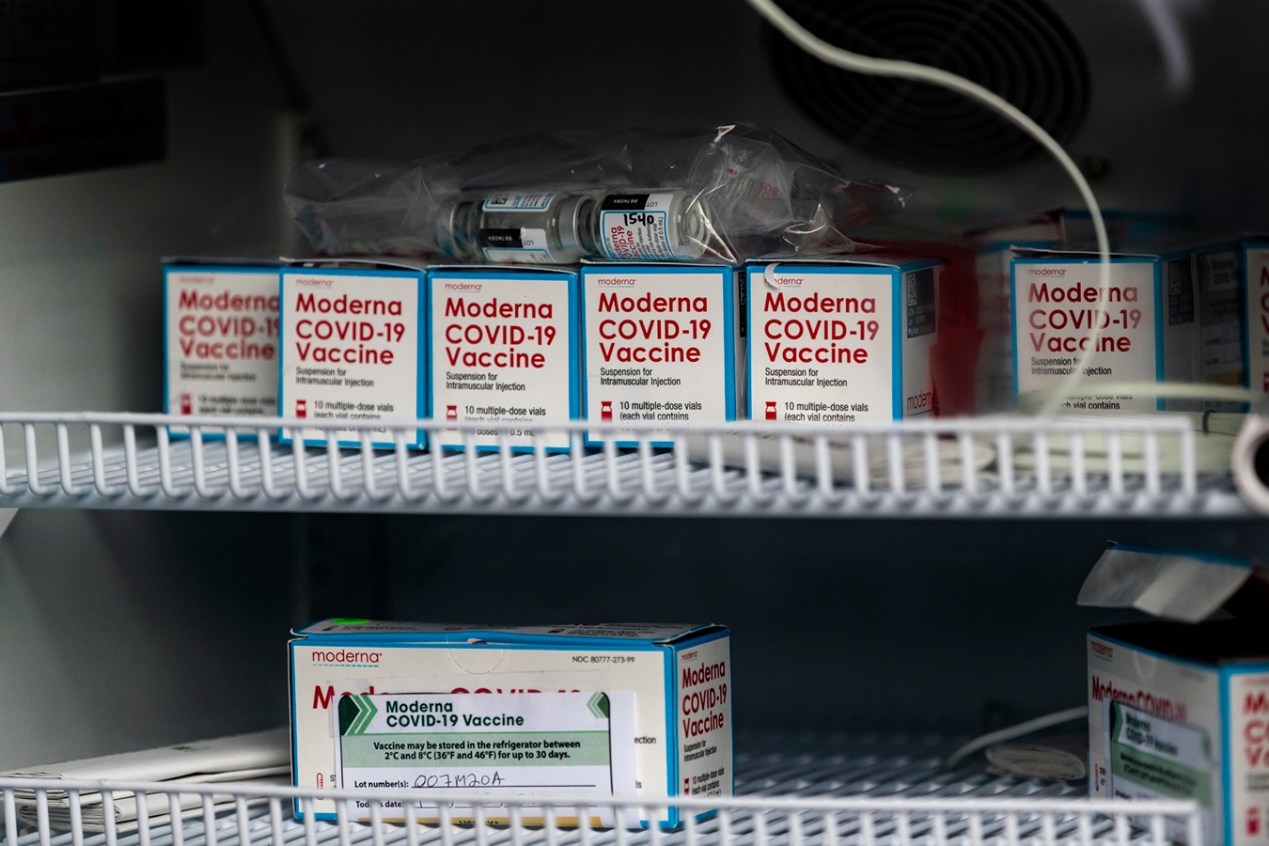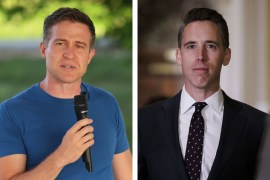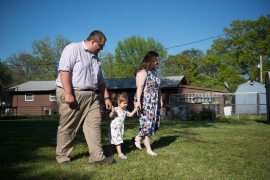April 30 will mark the end of the first 100 days of President Joe Biden’s tenure. That’s a benchmark presidents often set for making good on high-priority campaign promises.
In early December, Biden announced that one promise would be to get 100 million covid-19 vaccines into the arms of Americans in the first 100 days, averaging about 1 million daily doses. The U.S. reached that pace around Inauguration Day but will have to maintain it for the next three months for Biden to reach his goal.
If realized, how will everyday life change? We asked the experts.
Could 100 Million Doses Achieve Herd Immunity?
First, does 100 million doses translate to 100 million people being vaccinated by April 30?
The short answer: no.
Biden has emphasized that his goal doesn’t mean 100 million people will be fully vaccinated, but rather that 100 million shots will be administered. After all, both the Moderna and Pfizer-BioNTech vaccines require two doses.
When we first reached out to Biden team members in early December to ask about this target number, they said they were aiming for 50 million people to receive both doses and become fully inoculated. Then, in early January, they said the president-elect instead favored releasing most of the vaccine supply as it’s produced, rather than holding back doses for people’s second shots, on the assumption that new vaccine being produced would cover those booster shots on schedule. The Trump administration, still in office, announced a similar plan. Even now, though, about two weeks into Biden’s term, confusion continues to surround the implementation of that policy, which could influence the number of people who receive both vaccine doses within the first 100 days.
At a Jan. 26 press briefing, Biden said his goal of 100 million shots “means somewhere between 60 — maybe less, maybe more — million people” will receive at least one dose of vaccine.
Some critics have said the target number should be higher. A day earlier, Biden suggested he would like to eventually increase the rate of vaccinations to 1.5 million a day.
Whether it’s 50 million or 60 million people who are fully inoculated by the end of April, that number is still well below the prevailing herd immunity threshold recommended by public health experts.
Remember, herd immunity is achieved when enough people in a population become resistant to a disease so that it has difficulty spreading. Epidemiologists estimate at least 70% of a population must be protected to reach herd immunity. Because it’s unknown how long natural immunity lasts after being infected with the coronavirus, it’s recommended that even those who have had covid be vaccinated to reach herd immunity. Dr. Anthony Fauci, director of the National Institute of Allergy and Infectious Diseases, has suggested the herd immunity benchmark could be higher, up to 90%, especially since it seems some new covid variants are more transmissible than the dominant U.S. strain.
For now, let’s leave the herd immunity estimate at 70% and figure out how long it would take to reach that level.
Dr. Bruce Y. Lee, a professor of health policy and management at the City University of New York, walked KHN through the math. About 330 million people live in the U.S. Seventy percent of that figure equals about 231 million.
Currently, the U.S. has access only to the two-dose Moderna and Pfizer vaccines, meaning the nation would need 462 million doses to fully vaccinate enough people to reach that 70% mark.
At a rate of 1 million doses administered per day, it would take more than 460 days. “Which we would reach sometime in early 2022,” said Lee.
An additional challenge: Of the estimated 330 million people in the U.S., about 70 million are children and not yet eligible to receive a vaccine, so the vast majority of adults would have to be vaccinated to achieve this level of herd immunity.
Others have sketched out how the timeline accelerates if vaccination numbers improve. For instance, KFF chief executive Drew Altman wrote in a column that if the U.S. increased vaccine administration to 1.9 million shots a day, 70% of the population could have vaccine coverage by Labor Day. If vaccinations were increased to 2.4 million a day, that threshold could be reached by July 4. (KHN is an editorially independent program of KFF.)
In addition, other vaccines are in the pipeline that require only one dose, such as the Johnson & Johnson vaccine, and could change these projections.
At the White House’s second covid response team briefing on Jan. 29, Andy Slavitt, senior adviser to the team, said about 1.2 million vaccine doses per day had been administered in the past week. Vaccine trackers from Bloomberg News and The Washington Post also report about 1 million people in the U.S. receiving their first dose of vaccine every day in the past week. And the Biden administration expects this number to increase significantly in the coming weeks and months.
But roadblocks loom, including a short supply of vaccine.
Between the Trump and Biden administrations, the U.S. has agreed to purchase 600 million doses, in all, of the covid vaccines from Moderna and Pfizer. One-third, or 200 million, of that amount was supposed to be delivered by the end of March. The remaining doses aren’t slated to arrive until late spring and summer.
“The brutal truth is it’s going to take months before the majority of Americans are vaccinated,” Biden acknowledged during his Jan. 26 news conference announcing the United States’ latest vaccine acquisition.
The difficulty of reaching people who may have trouble accessing the vaccine, such as rural residents or communities of color, could also hamper vaccination efforts. And certain individuals are likely to be hesitant or refuse to get vaccinated.
When Will Life Return to Normal?
What if you become one of the lucky ones to get vaccinated during Biden’s first 100 days of the vaccine rollout?
People will still not be able to return to their pre-pandemic activities, said public health experts. A sense of normalcy won’t return until we approach 70% or more of Americans vaccinated.
“As hard as it is to hear, if you get your second dose of the vaccine before we have vaccinated the majority of the population, we all still need you to take the same protective measures you were taking before you were vaccinated,” said Dr. Rachel Vreeman, director of the Arnhold Institute for Global Health at Mount Sinai’s medical school in New York City.
That means, even if you’re vaccinated, you should continue to wear a mask, practice physical distancing with those outside your household, stay home and regularly wash your hands. The same precautions are recommended for those who won’t be inoculated by April 30.
Vreeman added that a week or two after you receive your second dose of the vaccine, you are less likely to get seriously ill from covid. But you could still get sick. And it’s possible you could pass on the virus to others not yet vaccinated. Clinical trials for the covid vaccines didn’t evaluate whether it stopped asymptomatic transmission, only if symptoms were reduced.
“Immediately at the end of April, for the average American, there won’t be a dramatic change in what they’re seeing in regards to social distancing and masking,” said L.J Tan, chief strategy officer for the Immunization Action Coalition, a nonprofit that works with the Centers for Disease Control and Prevention to distribute vaccine information.
Jeffrey Shaman, an environmental health professor at Columbia University, said states should maintain covid restrictions, such as those related to face coverings, remote work and limited travel, during the vaccine distribution process. In a recent modeling study, Shaman and his colleagues found that if such restrictions were lifted this month, 29 million additional covid infections could emerge by summer. He recommends keeping them in place through July.
“The bottom line is, if we lift our restrictions and we go back to what it was like before the pandemic, the virus is going to take off again,” said Shaman. “Then the race to get vaccines in arms will be complicated because more people will get sick.”
Experts also said that with multiple covid variants circulating in the U.S., some of which appear to be highly transmissible, taking precautions seriously is critical — especially if vaccines aren’t as protective against them. Plus, the fewer people who get sick, the less likely it is the virus can replicate, mutate again and create more variants.
As for when things will return to normal? That depends on the rate of vaccinations and how many Americans are willing to roll up their sleeves.
“I think we will be back to life in the fall, hopefully before Thanksgiving,” said Tan.
Other experts we asked said it’s possible there could be some semblance of a return to normalcy in the summer.
But, they all agreed, it certainly won’t happen by April 30.







